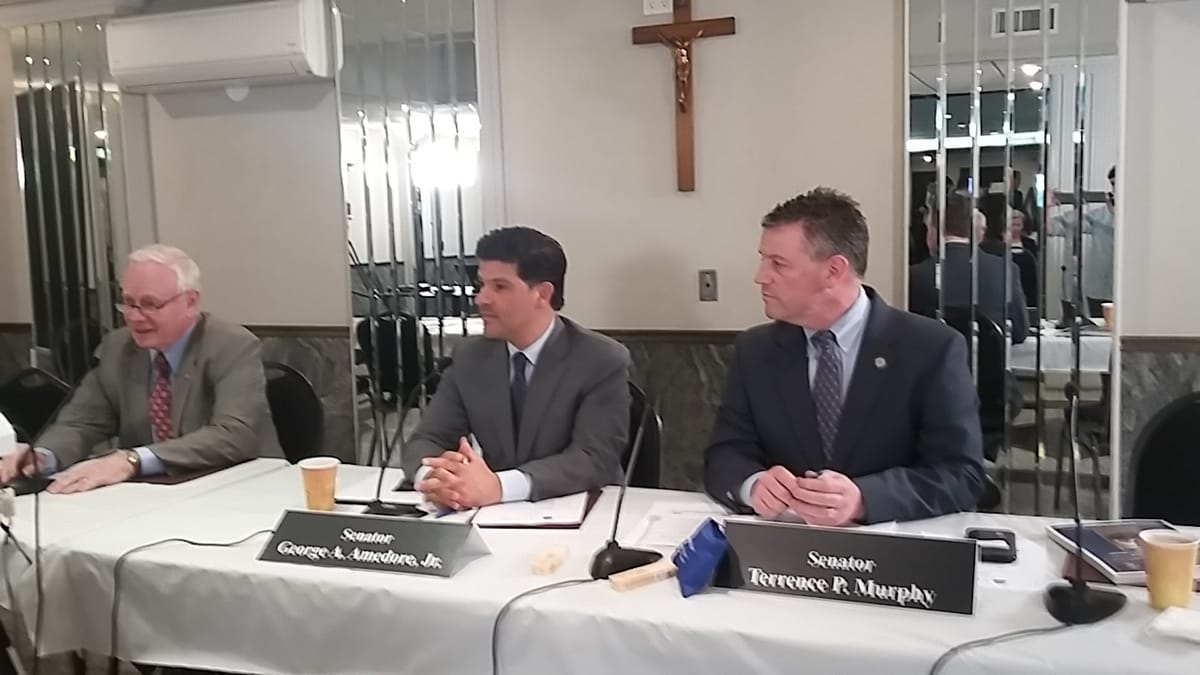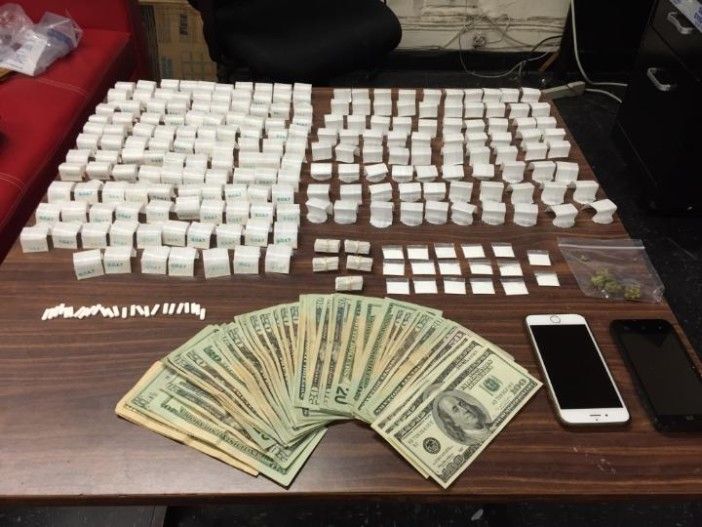Heroin Task Force Tackles Stigma In Dyker Heights: “Nobody Wants A Treatment Center In Their Backyard”

// <![CDATA[ (function(d, s, id) { var js, fjs = d.getElementsByTagName(s)[0]; if (d.getElementById(id)) return; js = d.createElement(s); js.id = id; js.src = "//connect.facebook.net/en_US/sdk.js#xfbml=1&version=v2.3"; fjs.parentNode.insertBefore(js, fjs);}(document, 'script', 'facebook-jssdk')); // ]]>
Watch Live Town Hall. (Share video & help us spread the word) Heroin & Opioid Addiction Town Hall with Senators Marty Golden, Senator Terrence Murphy and Senator George Amedore Jr
Posted by Marty Golden on Friday, February 26, 2016
Community members gathered at Knights of Columbus (1305 86th Street) Friday to participate in a panel discussion — hosted by Senator Marty Golden and Upstate New York Senators Terrence Murphy and George Amedore Jr — addressing an escalating heroin and opioid addiction problem facing Staten Island and southern Brooklyn.

Law enforcement and health experts outlined how opioid addiction has morphed since the 1990s from crude street drugs impacting mostly lower-income people to a massive black market operation — involving physicians, the Mexican cartel, local kingpins and elaborate drug rings — reaching families of all socioeconomic classes.
“It’s just a shame that we’re not prepared for it and all of a sudden, pop! — it could happen to any of us.” said Golden. “Two doctor’s kids just died here in Dyker Heights.”
Experts say a multi-pronged approach will be necessary to tackle the problem, but the biggest hurdle is overcoming the stigma of drug addiction.
David Bochner, director of Cornerstone of the Medical Arts Center — which operates private treatment centers in Queens and Rhinebeck, New York — said the stigma is to blame for a shortage of detox beds in New York City.
“No one wants it in their back yard. Everyone talks a big game, but when it’s time to treat addicts… people are leaving the state and leaving the city and going on vacation to Florida and California — and they’re coming home to the same places and things,” said Bochner “I cannot send referrals without the short term in-patient treatment that people need.”

In attendance were sober young members from Dynamic Youth Community, a long-term opioid treatment facility with locations in Brooklyn and Fallsburg, New York that has been open 43 years. Dynamic’s Executive Director William Fusco testified that in 2008, when his organization observed the shift from crack/cocaine and other street drugs to highly addictive and accessible opiates, he and his colleagues tried to alert community leaders and legislators, but weren’t taken seriously.
“We were met with much resistance from most of the people we talked to — people just could understand that this was possible — they certainly didn’t want to believe that it would bring us to where we are today,” said Fusco.
Similarly, Senator Murphy recalled how one Upstate New York mayor he spoke to refused to address the heroin epidemic in his town because he feared it would negatively impact property values.
Since 2009, much has changed in the way law enforcement agencies respond to the illegal drug market. Rather than go after everyday street dealers, law enforcement agencies say they are tackling the “big guys” — the kingpins, drug labs, and the smuggling rings. In 2015, 1,000 pounds of heroin were seized by law enforcement in New York City, up from 600 pounds in 2006, according to special narcotics prosecutor Bridget G. Brennan.
But rounding up drug traffickers is not enough. Experts say prescription abuse has reached an all time high since 2009 — with 1.3 million oxycodone scripts filled in New York City in 2014 — and that painkillers are paving the way for cheaper and more potent heroin. While the number of opioid scripts continues to rise, finally — after a series of crackdowns on doctors and pharmacies that prescribe them — prosecutors say the figures are beginning to level off.
“It suggests to me that we are starting to see the gateway — the drug that introduces the new user — instead of open wider and wider, but starting to close,” said Brennan.
Another challenge is that the heroin of today is cheaper and more potent than ever, testified Assistant Chief Brian McCarthy, Commanding Officer of the NYPD’s Narcotics Division.
In the 1980s, heroin was ugly: heavily diluted to 60 – 70 percent, always injected, and associated with a very low socioeconomic class. Today’s dope is 75 percent pure, can be taken in a variety forms, and in many cases, access is as simple as a home delivery.
“It doesn’t have the same ugliness, so from a community perspective it’s something we really have to work on,” said McCarthy.
In addition to numerous bills cracking down on the prescription and distribution of these drugs, legislators are working to expand the of availability Naloxone, a life-saving medication that can intercept an overdose. Today, most police officers carry the drug and it can be found at many pharmacies.
Since awareness is crucial, Brooklyn Community Board 10’s Josephine Beckmann said the board had done outreach to local schools to create more programing about addiction.
Golden — who is part of a newly formed State Senate task force on heroin addiction with Amedore and Murphy and Senator Robert Ortt — urged addicts who are afraid seek help from their church communities or families due to the stigma of illegal drug use to approach his office for resources.
“The stigma has got to go,” agreed Murphy.
If you or someone you know is struggling with heroin or prescription drug abuse, visit www.combatheroin.ny.gov or call 1(877) HOPENY or 1(877)-846-7369. Video of the entire meeting can be viewed on Senator Golden’s Facebook page.



